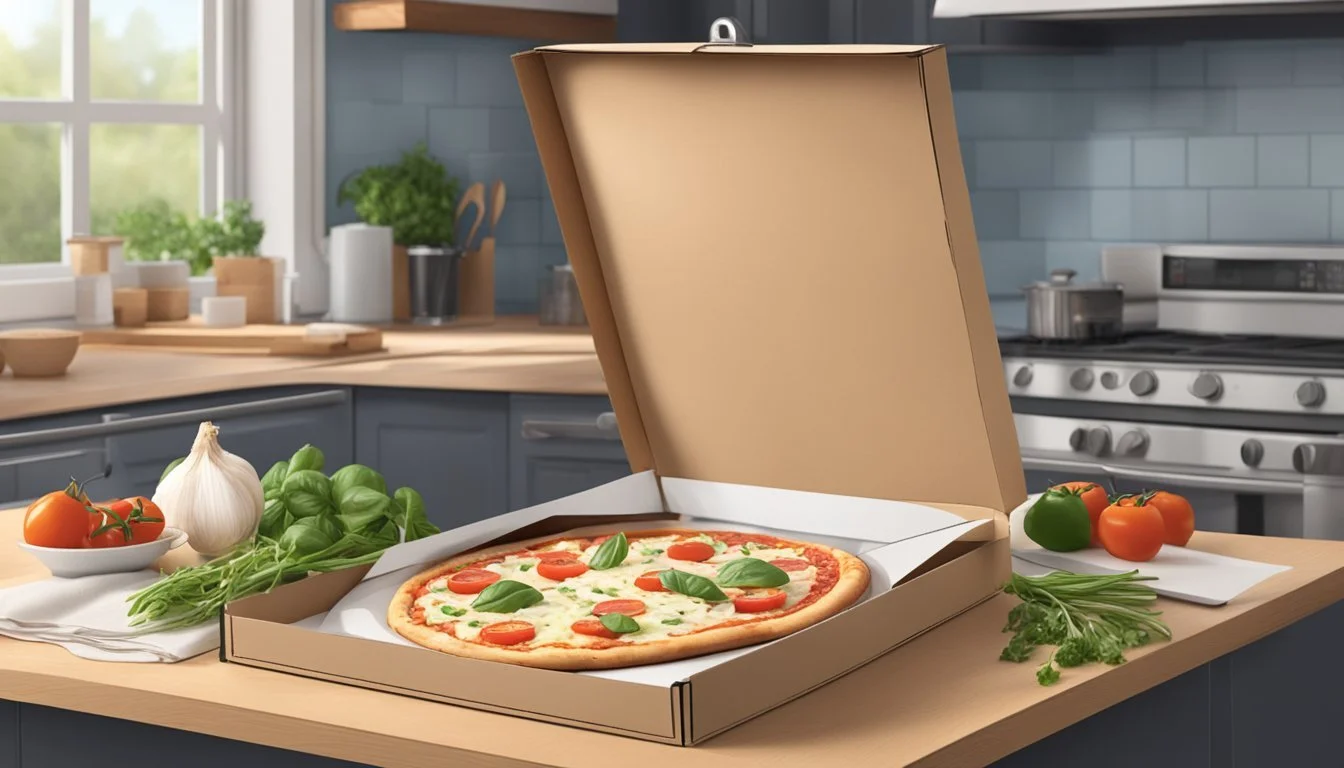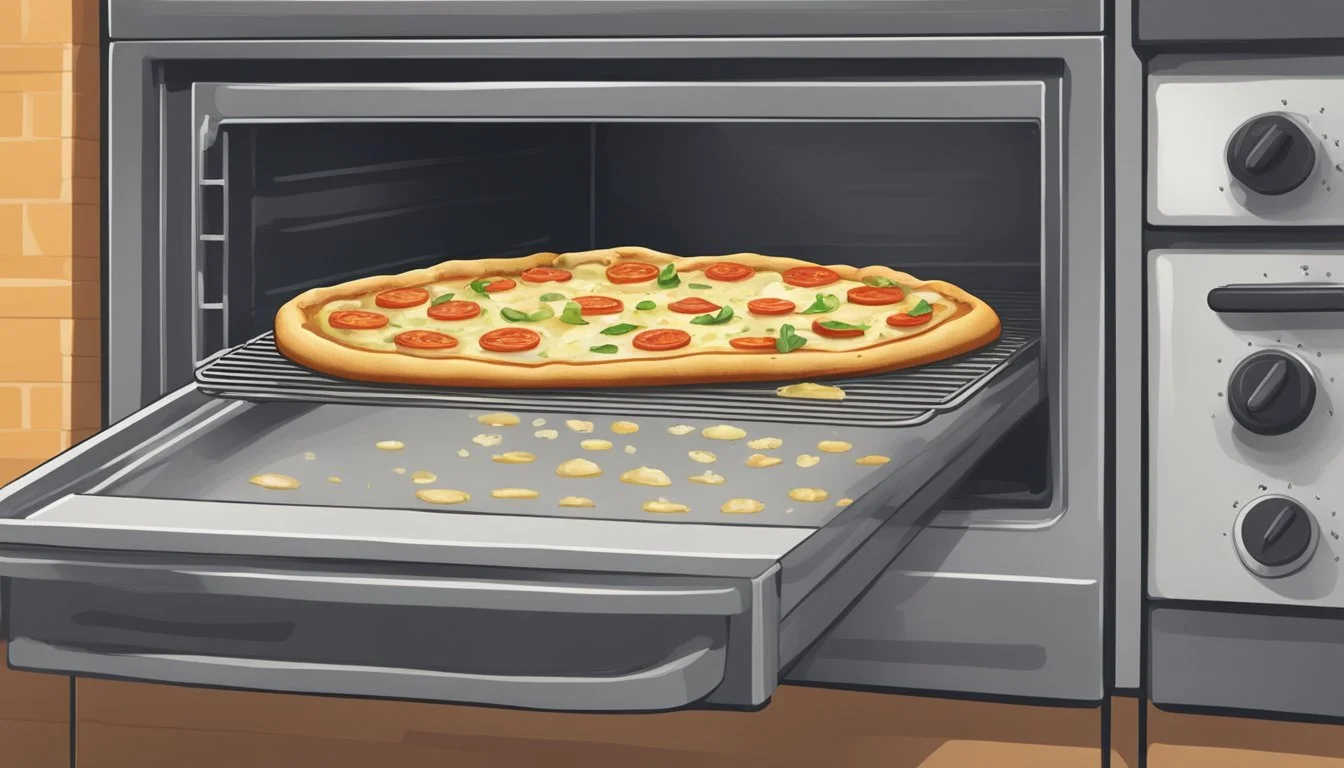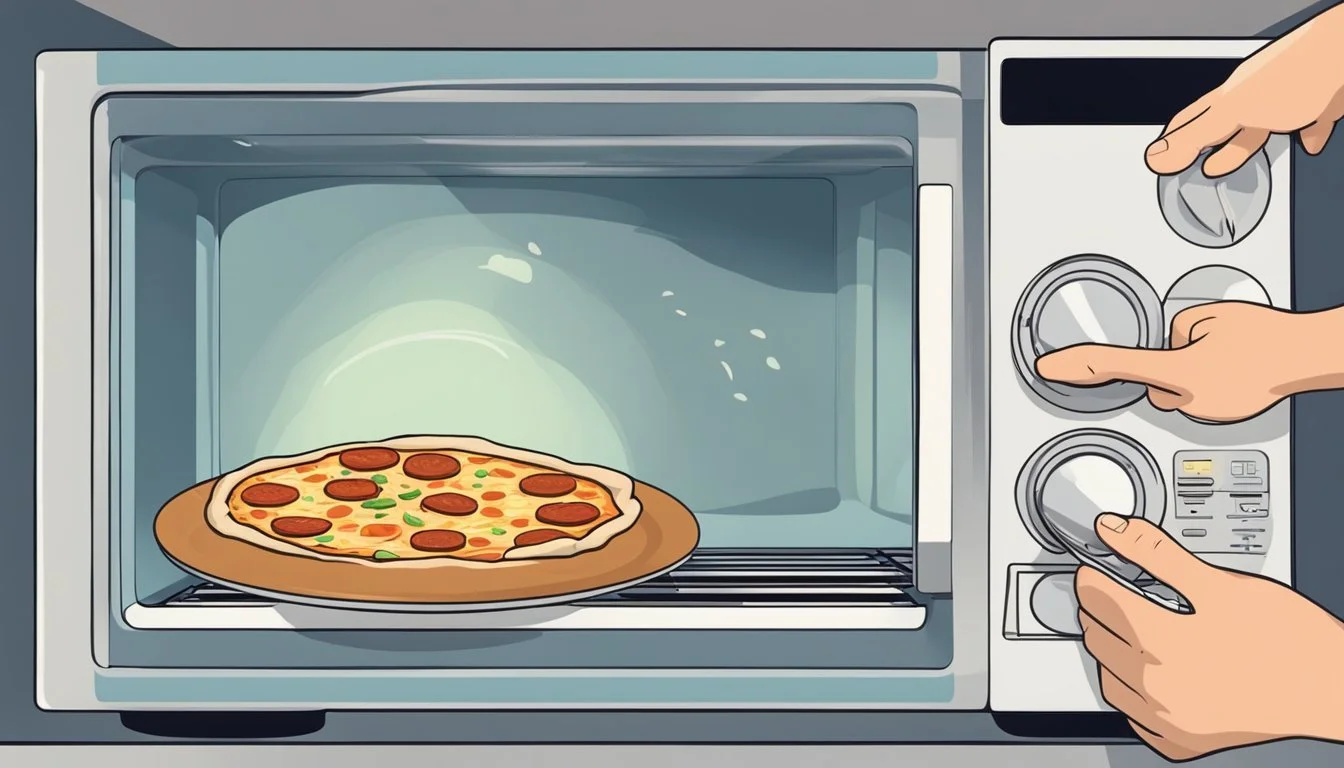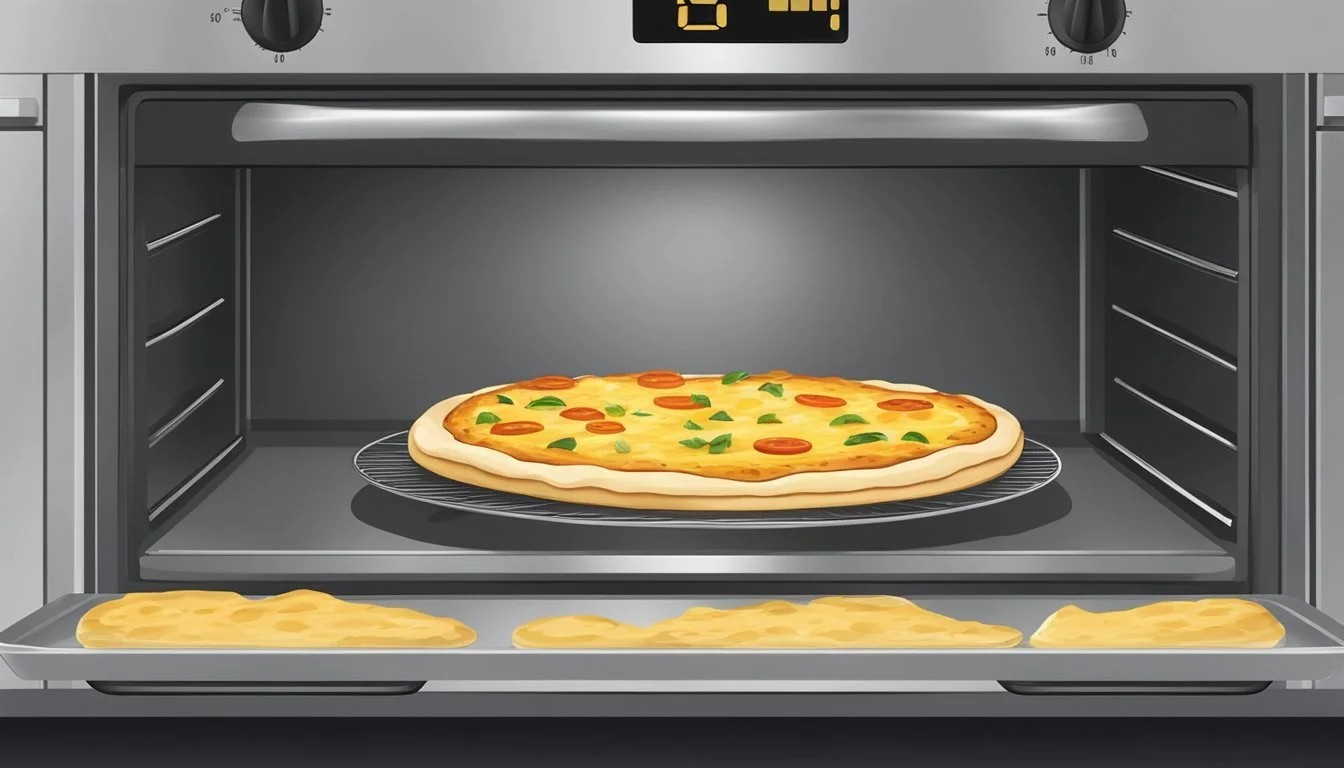How to Reheat Garlic Parmesan Pizza for Best Flavor
Reheating garlic parmesan pizza to retain its freshness and delightful flavor can be a challenging task, but it is entirely achievable with the right methods. For the best results, using a toaster oven stands out as a highly effective option. Preheat the toaster oven to 375°F (190°C) and place the pizza directly on the rack or on a piece of aluminum foil for 3-5 minutes until it is hot and crispy.
For those seeking an alternative, a preheated baking sheet in the oven can work wonders. Placing the pizza on the hot sheet and heating it at 375°F (190°C) for five to seven minutes for thin crust or seven to nine minutes for thicker crust ensures that the cheese is bubbly and the crust regains its original crunch.
A microwave can also be used if efficiency is a priority, although it may not yield the crispiest results. Place a slice of pizza on a microwave-safe plate, accompanied by a cup of water to maintain moisture, and heat in 30-second intervals until the pizza is warmed through. Each method offers a reliable way to enjoy leftover garlic parmesan pizza that tastes almost as good as fresh.
Assessing Pizza Condition
Before reheating Garlic Parmesan Pizza, it is crucial to assess its current condition. This involves checking its freshness and considering how it was stored.
Checking for Freshness
Evaluating the freshness of leftover pizza is essential. Begin by inspecting the crust. It should be firm but not overly hard. A stale crust may signal that the pizza is too old to reheat effectively. Also, examine the cheese and toppings for any signs of spoilage, such as discoloration or an off smell.
Next, consider the texture and aroma. Fresh pizza will have a distinct garlic and parmesan scent. If the smell is sour or unpleasant, the pizza may have gone bad. Visual inspection coupled with a sniff test provides a good indication of whether the pizza is still good for reheating.
Storage Considerations
Proper storage plays a significant role in maintaining the quality of pizza. If the pizza was left out at room temperature for more than two hours, it might not be safe to eat. For optimal freshness, leftover pizza should be stored in the fridge.
Store the pizza in an airtight container or wrap it tightly in plastic bags to prevent air exposure. This helps keep the pizza from drying out and absorbing other odors in the fridge. For maintaining moisture, it's better to use containers rather than just aluminum foil or plastic wrap.
If stored correctly, pizza can last in the fridge for up to four days. Beyond this period, it is advisable to discard it to avoid potential foodborne illnesses.
Preparation for Reheating
Proper preparation is key to reheating Garlic Parmesan Pizza effectively. This includes bringing the pizza to room temperature, preheating your kitchen appliance, and arranging the pizza for optimal heating.
Bringing Pizza to Room Temperature
Allow the pizza to come to room temperature before reheating. This helps avoid uneven heating and ensures the pizza warms thoroughly. Remove the pizza from the refrigerator and let it sit out for about 20-30 minutes. This step is particularly important when reheating in an oven or air fryer, as it minimizes the risk of the pizza becoming soggy or cold in the center.
Preheating the Kitchen Appliance
Preheating your kitchen appliance ensures a consistently heated pizza. For an oven, preheat to 375°F (190°C). If using a toaster oven or air fryer, set it to the same temperature. Using a pizza stone can help retain heat and provide a crispier crust. Place the pizza stone in the oven during preheating to ensure it’s hot when the pizza is placed on it. If using a baking sheet, also preheat it to ensure a crispier bottom crust.
Arranging the Pizza
Properly arranging the pizza is crucial. For an oven or toaster oven, place the pizza directly on the rack or on a preheated pizza stone. To catch any drips, you can place a piece of foil beneath it. For less mess, place the pizza on a baking sheet lined with foil. In an air fryer, arrange the slices in a single layer to ensure even cooking. Avoid overlapping the pizza slices to maintain crispness and prevent sticking.
Reheating Methods
Choosing the right method to reheat garlic parmesan pizza ensures a crispy crust and flavorful toppings. Different methods offer unique benefits and can be selected based on available appliances and personal preferences.
Oven Method
The oven method is great for retaining the pizza's original texture. Preheat the oven to 375°F (190°C). Place the pizza slice on a baking sheet lined with aluminum foil. To keep the crust crispy without drying out the pizza, cover the pizza loosely with another piece of foil. Bake for 10 minutes or until the cheese is bubbly.
For an extra crisp, remove the top foil for the last 2-3 minutes. This method evenly heats the pizza while preserving the rich garlic and parmesan flavors.
Stovetop Method
To reheat on the stovetop, use a frying pan with a lid. Heat the pan over medium heat and place the pizza slice in the pan. Cover the pan to allow the cheese to melt uniformly. This method keeps the crust crisp on the bottom while ensuring the toppings are heated properly.
For best results, add a few drops of water into the pan before covering. This helps create steam, enhancing the reheating process without making the crust soggy. Check the pizza frequently to avoid burning.
Air Fryer Method
Using an air fryer can quickly make the pizza crispy. Set the air fryer to 350°F (175°C). Place the pizza slice in the air fryer basket, ensuring it doesn’t overlap. Air fry for about 4-5 minutes.
Check midway and adjust if necessary. The air fryer's hot air circulation crisps up the crust and reheats the toppings evenly. This method is convenient and efficient for a quick fix.
Microwave Method
For a fast solution, use the microwave, albeit with some compromise on texture. Place the pizza slice on a microwave-safe plate. To avoid a chewy crust, place a cup of water in the microwave with the pizza. This generates steam, which can help soften the crust slightly while heating the slice.
Microwave on medium-high for 1-2 minutes. This method can make the crust a bit soft, so it's best for those in a hurry. Consider finishing the slice in a frying pan for a few seconds to regain some crispiness.
These methods cater to different needs and preferences, ensuring your garlic parmesan pizza is as enjoyable as when it was freshly made.
Ensuring Optimal Taste and Texture
Reheating garlic parmesan pizza requires attention to the crust, toppings, and cheese to ensure a delicious result. Focus on maintaining a crispy crust, preventing toppings from drying out, and assessing the quality of the melted cheese.
Maintaining a Crispy Crust
A crispy crust is essential for an enjoyable garlic parmesan pizza experience. Preheat a toaster oven to 375°F (190°C). Place the pizza directly on the rack or on aluminum foil to reduce mess.
Using the toaster oven helps maintain crispness by providing even heat distribution. Avoid microwaves as they can make the crust soggy. If using a conventional oven, consider placing the pizza on a preheated baking stone or steel for additional crispness.
Preventing Toppings from Drying Out
Preventing toppings, especially garlic parmesan sauce and parmesan cheese, from drying out is crucial. Wrap the pizza slice loosely in aluminum foil. This allows heat to penetrate without direct exposure, which may dry out the toppings.
Ensure the foil is not sealed too tightly, allowing steam to escape. This approach helps preserve the moisture levels in the garlic and other toppings, keeping them flavorful. Halfway through reheating, open the foil slightly to allow the pizza to heat uniformly.
Assessing Cheese Melt
Achieving the perfect melted cheese without overcooking is a delicate balance. Reheat the pizza until the cheese begins to bubble and melt.
Monitor the pizza closely, especially if it contains garlic powder or garlic parmesan sauce, which can burn if left too long. In the toaster oven, check after 3-4 minutes and continue in 30-second intervals until the cheese is perfectly melted.
Using these methods ensures that the garlic parmesan pizza retains its original taste and texture while being thoroughly reheated.
Post-Reheating Tips
To get the most out of your reheated Garlic Parmesan Pizza, follow these specific tips. Ensuring a brief resting period post-heating helps enhance its texture and flavor.
Resting Time After Reheating
After reheating, let the Garlic Parmesan Pizza rest for 1-2 minutes. This helps redistribute the moisture, preventing it from becoming too dry. Resting also allows the cheese and toppings to settle, holding together better when you take a bite.
For optimal results, place the pizza on a cooling rack during this period. This prevents the crust from getting soggy by allowing excess steam to escape. If a cooling rack isn't available, using a plate lined with a paper towel can work as a substitute.
Customizing Leftover Pizza
Enhancing leftover Garlic Parmesan pizza can turn a simple snack into a gourmet experience. By adding fresh ingredients or tweaking the flavor profile, the possibilities are almost endless.
Adding Fresh Ingredients
Fresh ingredients can breathe new life into leftover pizza. Basil and fresh garlic are two excellent choices. Adding basil brings a vibrant, aromatic quality, while fresh garlic intensifies the pizza's taste. Tomato slices can also add a juicy, tangy note, balancing the richness of the cheese.
Sprinkling red pepper flakes adds a spicy kick. Olive oil drizzled over the top can enhance both texture and flavor. Incorporating dried herbs like oregano or rosemary will contribute to an Italian essence. Simple, fresh touches can make the pizza taste as though it were just made.
Creating a Custom Flavor Profile
Creating a custom flavor profile allows for creative flair. A dash of Italian seasoning can blend seamlessly with the existing flavors. For those who enjoy bold flavors, combining spicy elements like chili flakes with savory notes from anchovies or olives can add depth.
Innovate by adding unconventional toppings. Arugula offers a peppery bite, while prosciutto brings a salty sophistication. Even a few slices of fresh mozzarella can change the texture and taste. Balancing new additions with the existing garlic Parmesan base ensures that the pizza remains harmonious in flavor.
By experimenting with different combinations, leftover pizza can become a canvas for culinary creativity.
Advanced Tips for Foodies
In this section, learn how to enhance the flavor profile of your Garlic Parmesan Pizza using specialized techniques. Add depth with a homemade sauce and achieve the perfect texture with a roux for cheesy goo.
Maximizing Flavor with a Garlic Parmesan Sauce
To elevate your pizza, create a Garlic Parmesan Sauce. Start by melting 2 tablespoons of butter over medium heat. Add 4 cloves of minced garlic, sautéing until fragrant.
Next, incorporate 1 cup of heavy cream and bring it to a simmer. Stir in 1 cup of grated Parmesan cheese and continue to cook until the sauce thickens. A pinch of black pepper adds spice without overwhelming the garlic and cheese.
For a velvety texture, whisk in 1 teaspoon of cornstarch dissolved in water. This method ensures the sauce clings perfectly to the pizza crust, adding both moisture and a burst of flavor.
Making a Roux for Cheesy Goo
A roux creates the foundation for a rich, gooey topping. Combine equal parts (2 tablespoons each) of butter and all-purpose flour in a saucepan, cooking until the mixture is golden.
Slowly whisk in 1 cup of milk, ensuring no lumps form. Increase the heat slightly and cook until the mixture thickens. Then, mix in 1 cup of grated Parmesan cheese, stirring until it melts completely.
The roux-based sauce can be spread over your pizza before reheating. It adds a creamy, cheesy layer that complements the garlic and Parmesan, making every bite indulgent.
Both techniques bring a new dimension of flavor and texture, transforming your reheated Garlic Parmesan Pizza into a gourmet experience.
Long-Term Storage Solutions
Proper long-term storage ensures that your Garlic Parmesan Pizza retains its flavor and texture. Learn about the benefits and methods of refrigerating versus freezing pizza for later enjoyment.
Refrigerating Versus Freezing
When opting for refrigeration, store leftover pizza in resealable plastic bags or an airtight container. This can keep the pizza fresh for up to 4 days. Refrigerating prevents moisture loss and the growth of bacteria.
For freezing pizza, wrap each slice tightly in aluminum foil or plastic wrap before placing them in a resealable plastic bag or an airtight container. Freezing can preserve pizza for up to 2 months. This method halts bacterial growth and locks in flavors, albeit with a slight loss in texture.
Both methods require a proper seal to maintain freshness and prevent freezer burn. However, freezing is ideal for longer storage, while refrigerating is better for short-term preservation.







